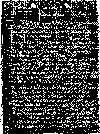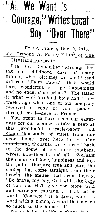
- Who is responsible for the website? Hints from URLs
Many URLs (Uniform Resource Locator or web site address) include the name and type of organization sponsoring the webpage. The 3-letter domain codes and 2-letter country codes provide hints on the type of organization. Common domain codes are:
| Domain | Sample Address |
| .edu = educational institution | http://docsouth.unc.edu |
| .gov = US government site | http://memory.loc.gov |
| .org = organization or association | http://www.theaha.org |
| .com = commercial site | http://www.historychannel.com |
| .museum = museum | http://nc.history.museum |
| .net = personal or other site | http://www.californiahistory.net |
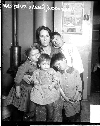
- Who is responsible for the website? Check for an Author
- Credentials -- who is the author or organization and what sort of qualifications to they have?
- Contact address -- is an email or some other contact information given?
- "About" link -- is there an "about," "background," or "philosophy" link that provides author or organizational information?
Look for the name of the author or organization responsible for the page. Look for the following information:
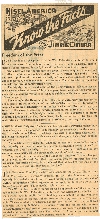
- Is there a clear purpose or reason for this site?
- Check for an "about" link -- these links often provide some information about the purpose of the site.
- Find the homepage for the site -- sometimes page includes the "about" link or other clues on the purpose of the organization sponsoring the site.
- Look for an agenda -- are documents slanted in some way to persuade you?. If the purpose of the website is to persuade, you should examine the material very closely before accepting it as fact.
Websites can be created for a variety of purposes: to disseminate information, provide access to collections, support teaching, sell products, persuade, etc. Discovering the purpose can help determine the reliability of the site and the information it provides.
Some pages explicitly state their purpose, others do not. To find information about the purpose:
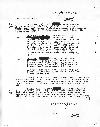
- Determining the Origin of the Document
- Scanned image of a document
The image of scanned documents usually illustrates what the original documents look like. The origin of the documents at a website may be determined by the creator of the website. For example, the Library of Congress website generally supplies documents from its own manuscript collections, but providing in-house documents is not always possible.Sometimes, websites will present texts from other document collections, or may provide links to documents at other websites. - Transcribed document
Transcribed documents do not illustrated the original image of the document but only provide the content in plain text format. It is important to discover the original source of a transcribed documents to determine if the transcription is complete and accurate. The source, which may be the original documents or published editions, should be cited. - Links to external documents
Metasites that link to external documents and sites that use frames requires you to track down the original website for the documents for evaluation purposes. A reliable website may link to a document in another not so reliable site and vice-versa.
In a website of primary sources it is important to determine where the author got the documents. The best sites clearly state the source of the original material. Different factors need to be considered based on the format of the document and type of site:
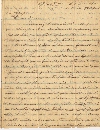
- What Do Others Say About the Web Site?
- Look up the web site in reputable history subject directories such as History Matters and the History Guide
- See if the site has been reviewed in the Internet Scout Project. Also check printed reviews.
- Find out what other webpages link to the web site. How many links
are there? What kinds of sites are they?
- Do a link search in Google.
Check to see if the web site is reviewed:
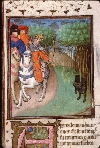
- Is the Content Clearly Explained, Organized, and Accessible?
- Pages that are legible with clear explanations.
- Obvious navigational aid that provide access to documents and obvious links on every webpage to the homepage.
- Individual urls for each document for ease of linking and citation information.
- Clear instructions about special software requirements.
Good web design not only makes an electronic resource easier to use, it is also one indication that the content has been provided, and is being maintained, by a trustworthy source. Although standards of what constitutes "good web design" vary widely, clarity, simplicity and easily-understandable navigational cues are some of the obvious signs. Some considerations are:
revised 8 September 2003
© 2003 RUSA
History Section
